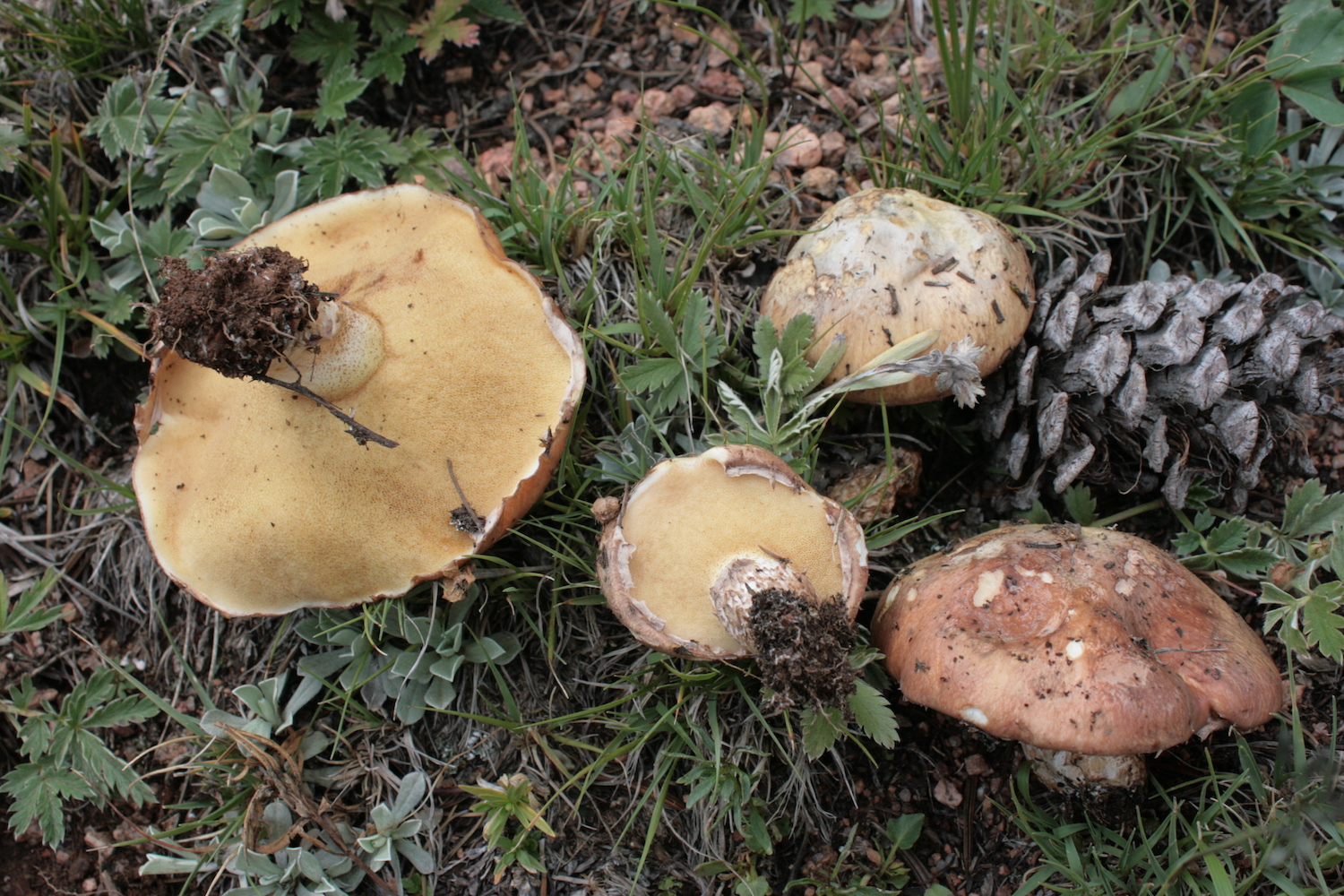
Suillus brunnescens (syn. Suillus borealis) is a mutualistic ectomycorrhizal mushroom-forming fungus that exchanges soil mineral nutrients for photosynthates from its host. It’s range is likely widespread across western North America, with DNA sequences confirming specimens from Colorado, California, Oregon and Idaho. It is closely related to the type species of the genus, Suillus luteus, but only differs in that they associate with Pinus subgenus Strobus (five-needle pines) rather than Pinus subgenus Pinus. This switch appears to be recent in evolutionary history and can serve as a model for host-switching (Nguyen et al. 2016).
Suillus as a genus is one of the most common ectomycorrhizal symbionts of the pine family (Pinaceae) in the northern hemisphere. Commonly known as ‘Slippery Jacks’, the mushrooms of this genus provide food for both wildlife and humans. Suillus species have been used in forest restoration following natural and human-made disturbances, have potential for bioremediation (mycoremediation), and likely play an important role in facilitating soil carbon sequestration in mycorrhizal forests.
This genome is part of the Community Science Program (Proposal 502931) “A genome atlas of the ectomycorrhizal genus Suillus: Phylogenetic diversity and population genomics of a keystone guild of symbiotic forest fungi”, a collaborative effort aimed at using genomics data to understand and connect the evolutionary history, ecology, and genomic mechanisms of mutualistic ectomycorrhizal symbionts and their Pinaceae hosts. Please contact the PI for permission prior to the use of any data in publications.
References:
Nguyen NH, Vellinga EC, Bruns TD, Kennedy PG. 2016. Phylogenetic assessment of global Suillus ITS sequences supports morphologically defined species and reveals synonymous and undescribed taxa. Mycologia 108:1216–1228, doi:10.3852/16-106.
